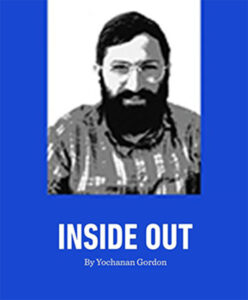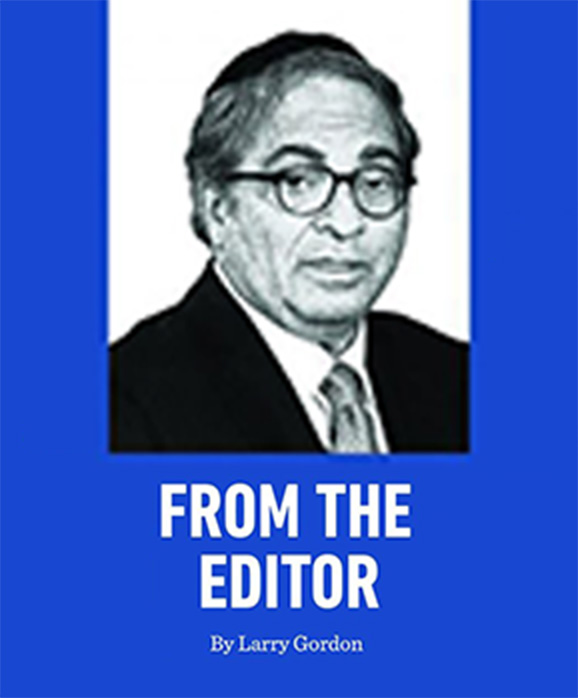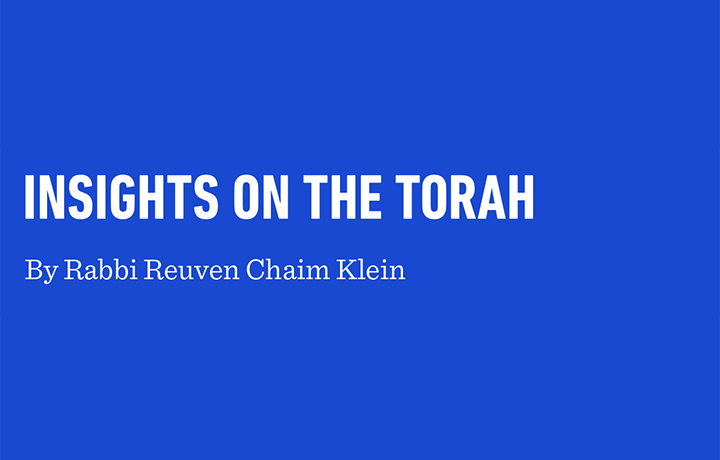Words For War
At the end of Parashat Chukat, the Jews fought their inaugural battles in the long war to conquer the Holy Land. Their first enemies were Sichon and Og, Emorite kings who ruled over territories in the trans-Jordan region. The common word for “war” in Biblical Hebrew is milchamah, and its associated verb to mean “warring” is lochem. This essay explores the various words for “war” in Hebrew, including the apparent synonyms milchamah, krav, pulmus, batrunya, and knigi (the last three are actually Greek).
The noun milchamah (inflections of which appear over 300 times in the Bible) and the verb lochem(inflections of which also appear around 300 times in the Bible) are almost unanimously traced to the triliteral root lammed-chet-mem. That root yields words with three different meanings: “bread,” “meat,” and “war.” Menachem Ibn Saruk in Machberet Menachem lists these three different sets of meanings as distinct declensions of lammed-chet-mem without insinuating any connection between them. However, Ibn Janach in his Sefer HaShorashim collapses the difference between the first meanings of this root by explaining that it refers broadly to “[staple/primary] food” with most instances of lechem in the Bible used in reference to “bread” and some remaining instances in reference to “meat.” This approach can be confirmed by looking to cognate languages, like Arabic, where lahm usually means “meat,” yet in the South Arabic dialect spoken on the island of Soqotra, it actually means “fish.” Radak in his Sefer HaShorashim further collapses the gap between these meanings derived from lammed-chet-mem by explaining that war can be figuratively characterized as the sword of the combatants “eating” the fatalities of war. [For more about the Hebrew word lechem and other words for “bread,” see “Let Them Eat Bread” (June 2018) and “Eating Cake” (April 2024).]
Rabbi Samson Raphael Hirsch (to Gen. 3:19, 10:9, 14:2) takes the discussion in a slightly different direction, explaining how the root lammed-chet-mem denotes the “struggle,” especially when it comes to the struggle for survival. In order to eat bread (lechem), man must “struggle” against nature (which only provides raw wheat, but not processed bread) and his fellow man (who might try to take away his food resources for his own purposes). The latter type of struggle typifies a milchamah, which is a battle or war fought between two or more human parties struggling for survival in a bid to win against the other. Using his signature phonetic etymology system, Rabbi Hirsch points to the existential nature of the struggle by connecting lammed-chet-memto lammed-aleph-mem (leum, “nation/state”). Just as the latter represents the existential essence of a nation or polity that oftentimes must overcome its enemies in order to survive, so too does the former refer to bread (or food in general) as the means of human existence and war as the means for preserving one’s bread.
Rabbi Shlomo Pappenheim in his work Cheshek Shlomo has a totally different approach. He traces the words lechem and milchamah to the biliteral root chet-mem. This is noteworthy because in general Rabbi Pappenheim understands that core biliteral roots can only be joined with the letters hey, aleph, mem, nun, tav, yud, or vav to create a three-letter root, but in this case, he understands the biliteral root chet-mem as joining with an initial lammed to form the words lechem and milchamah. Either way, Rabbi Pappenheim explains the core meaning of chet-mem as “heat.” He lists a whole bevy of words as deriving from this: cham (“hot”), cheimah (“anger,” when a person’s wrath had been heated up), chamah (“sun,” the world’s main source of heat), chaman (a pagan idol formed in the shape of the sun), chum (“brown,” the color of what appears to be sun-burnt), chemah (“butter,” a dairy product derived from milk by agitating the liquid and thereby heating it up), cheimat (“flask,” a vessel commonly used for storing butter or one that resembles the vat used for making butter), and chami/chamot (“parents-in-law,” because a woman’s husband’s parents shower her with warm love). To this, he adds the word lechem (“bread”) on account of the heat used to bake the dough into bread and the word milchamah on account of the heated nature of battle. As Rabbi Pappenheim explains, two sides only resort to war when things have heated up so much that they are ready to fight. [For a discussion of how the word chomah (“wall”) relates to this, see “Remembering the Wall” (July 2020).]
Another approach is adopted by the Theological Dictionary of the Old Testament (vol. 7) which suggests that the basic idea of lammed-chet-mem refers to “coming together.” In the case of lechem (“food”) it refers to people joining together for a meal or eaters coming into direct contact with foodstuff, while in the case of war, this root refers to enemy combatants coming into close contact on the battlefield as they fight. The scholars of that dictionary also point to the Arabic word lahhama (“soldering/welding”) as evidence of their hypothesis that lammed-chet-mem primarily refers to “coming together.” The truth is that this last meaning is not just found in Arabic, but is already found in Rabbinic Hebrew where halchamah already refers to “soldering/welding” (Jerusalemic Talmud Beitzah 1:5, Vayikra Rabbah §3:3, Shir HaShirim Rabbah §4:30, 5:10) as it does in Modern Hebrew. In fact, Rabbi Naftali Tzvi Yehuda Berlin, also known as the Netziv, in his work Ha’Emek Davar (to Num. 28:2) already partially makes this point by explaining that lechem relates to halachamah in the sense that food is what solidifies the connection between the body and soul by keeping a person alive. He further expands on this idea to explain that ritual sacrifices are called lechem because they likewise cement the bond between the Jewish People and Hashem. Nonetheless, the Netziv does not explicitly connect this to the idea of milchamah like the scholars behind TDOT did.
Before we move on to the next word for “war,” I just wanted to point out that the name Lachmi appears in the Bible as the brother of the Phillistine warrior Goliath (I Chron. 20:5), and Lachman ben Ristak was the name of a gentile mentioned in the Talmud (Eruvin 63b).
The Biblical Hebrew word krav also means “war/battle/combat” and appears in such phrases as yom krav—“Day of Battle” (Zech. 14:3, Ps. 78:9, Job 38:23) and klei krav—literally, “Instruments of Battle” [Weapons] (Ecc. 9:18). This word derives from the triliteral root kuf-reish-bet, which means “approaching,” “inside/innards,” and “war.” While the classical Hebrew lexicographers (like Ibn Saruk, Ibn Janach, and Radak) present these three meanings as distinct, the truth is blurrier than that. The closer one approaches towards something, the more one is closer to coming “inside” a certain perimeter and reaching its “innards.” Similarly, when two sides are pitted against each other in battle, those on the offense “approach” their enemies, while those on the defense try to protect whatever lies within the innards of their line of resistance. There are instances of the verbal form of kuf-reish-bet that literally refer to “approaching” but contextually refer to potentially “battling” (for examples, Ex. 14:10, Lev. 20:10, Deut. 2:19, 20:10).
The root kuf-reish-bet is also used in the word korban (“sacrifice”), which literally refers to bringing something close to the Altar, but in a metaphysical sense also represents the worshipper coming closer to Hashem. This root also appears in the context of sexual relations, which represents two people physically coming together (for examples, Gen. 20:4, Lev. 18:6 Deut. 22:14, Isa. 8:3). And Rabbi Samson Raphael Hirsch (to Ps. 140:2) writes that the word akrav (“scorpion”) is also related to this three-letter root (with the addition of an initial ayin) because that poisonous creature is always ready and poised to attack. Interestingly, Rabbi Yehudah Aryeh of Carpentras in his work Aholei Yehuda connects the word garav (a type of “boils/pimple”) to the krav (via the interchangeability of the gimmel and kuf), explaining that the garav is so itchy that a person feels impelled to “wage war” against himself and scratch the garav, even though it could lead to bleeding. [For more about garav, see “No More Boils” (Sep. 2024).] n
This article has been excerpted from its original. Please visit 5TJT.com to read the full version.Rabbi Reuven Chaim Klein is an author and freelance researcher based in Beitar Illit. He studied in Yeshiva Gedolah of Los Angeles, the Mir Yeshiva in Jerusalem, and Beth Medrash Govoha of America in Lakewood, and received semichah from leading rabbis. He also holds an MA in Jewish Education from Middlesex University/London School of Jewish Studies. Rabbi Klein authored two popular books that were published by Mosaica Press, as well as countless scholarly articles published in various venues. His articles on Hebrew synonyms are commissioned by Yeshivas Ohr Somayach in Jerusalem and have appeared on their website since 2016














